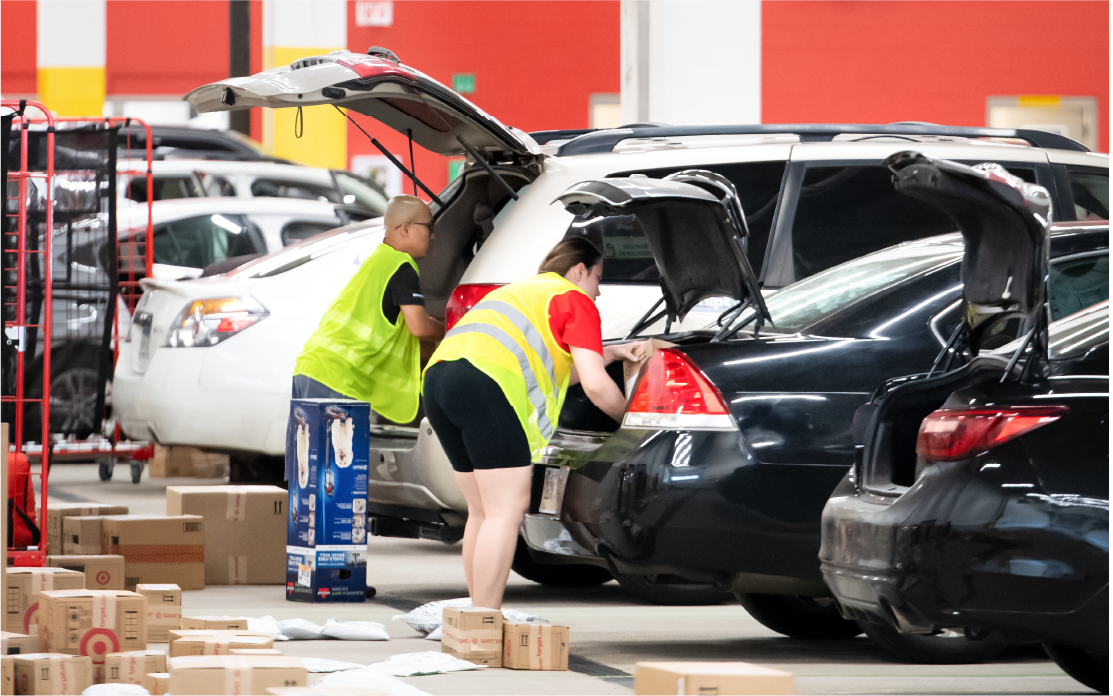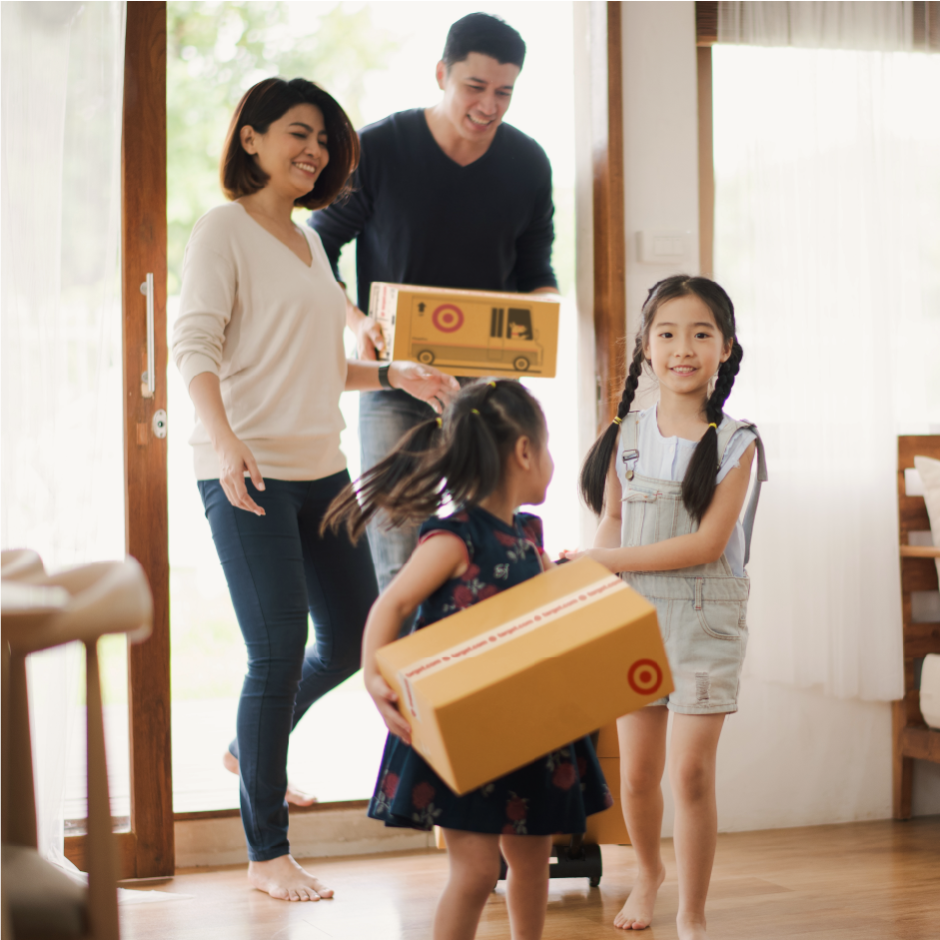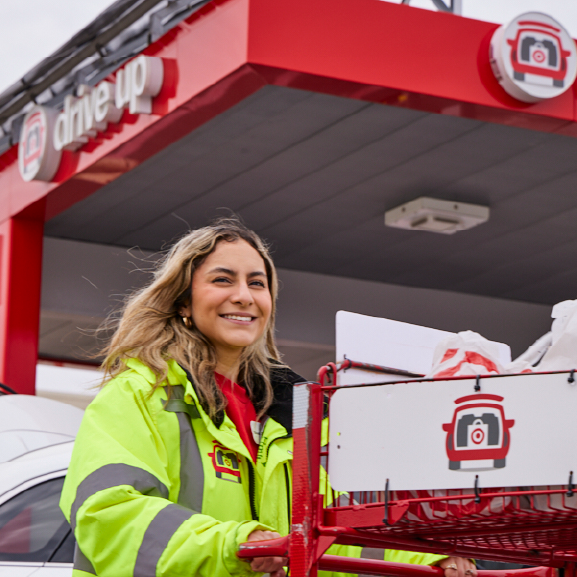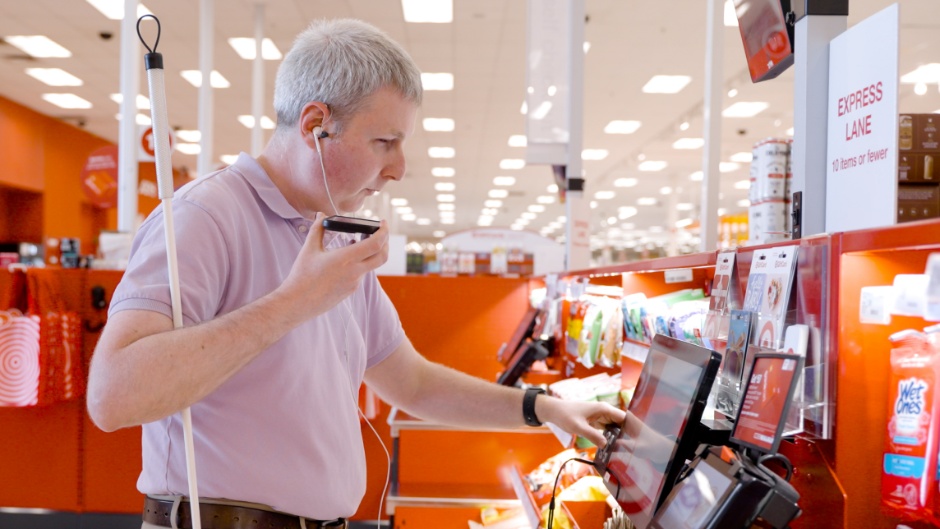We recently announced the expansion of next-day delivery to 35 top U.S. metro areas, just in time for the upcoming holiday season. We’re excited to bring next-day speed to more guests and will continue expanding the offering into over 20 more metro areas next year.
Next-day delivery is just one of the ways Target provides a convenient digital shopping experience. Today, over 80% of the U.S. population can get same-day delivery — for no extra cost if you’re a Target Circle 360 member — and 99% can get their items within two days. And almost all of our nearly 2,000 stores across the country have same-day Order Pickup and Drive Up, which are always free and available for guests on their timeline. It's a suite of flexible fulfillment options that helps our guests shop any way they want.
We’re tailoring our next-day delivery method market by market based on local capabilities and needs. It’s part of an ongoing supply chain evolution to ensure we’re leveraging our on-the-ground assets as effectively as possible to get faster for our guests and cheaper for our business. We’re building on our stores-as-hubs model with more precision and it’s helping drive long-term growth for Target.
We spoke with Gretchen McCarthy, Target’s executive vice president and chief supply chain & logistics officer, to learn more about the work.
What does next-day delivery look like behind the scenes?
Speed matters more than ever to consumers, so we’ve prioritized expanding faster delivery across the country. This past quarter, we delivered over 2 million more packages the next day than we did this time last year.
Having stores serve as mini fulfillment centers — the core of our stores-as-hubs model — gives us the ability to choose the fulfillment method that works best locally. Our 11 sortation centers continue to batch orders packed from stores for delivery through Shipt — what we call Target Last Mile Delivery (TLMD) — or by a third-party carrier, whichever costs less. We’re also expanding partnerships with national carriers as well as our program with Shipt where drivers pick up and deliver directly from stores to guests. Our technology recommends the most efficient delivery routes and uses geolocation tools for multiunit destinations like apartment buildings to ensure packages get to the exact right drop-off point.
Advancements to our routing and forecasting technology have enabled us to extend the time guests can place an order and get it the next day. The majority of next-day delivery markets have an “order by” time of 3 p.m. (local) or later, with several as late as 6 p.m. Since we know many digital guests shop later in the day, giving them this additional time to purchase leads to more next-day deliveries we’re able to do.

How did you decide where to launch next-day delivery?
Within areas with high or growing guest demand for shipping, we looked at where the density of our stores and supply chain assets would allow for next-day operations in a cost-effective way. That cost factor is key: Our digital business is profitable and as digital demand continues to rise, our supply chain needs to keep enabling that growth in ways that are good for Target’s bottom line.
What is the supply chain’s role in Target’s digital growth overall?
We get products to where they need to be, when they need to be there — whether that’s stores for in-person shopping or same-day fulfillment, or sortation centers and distribution centers for delivery to guests. Our supply chain is the backbone of Target’s increasing speed and convenience.
Our same-day services — Order Pickup, Drive Up and same-day delivery — have delivered year-over-year growth every quarter for nearly a decade, which is big momentum for our business. This past quarter, Target fulfilled almost 80% of all online orders within one day via these same-day services, and about 80% of same-day deliveries arrived to guests in three hours or less — particularly helpful when you need something as quickly as possible.
Improving Target’s digital experience means improving this fulfillment experience. So, this year we’ve introduced a new strategy that evaluates every store and supply chain facility at a granular level to ensure each one is focused on the work they do best within fulfillment. We’re refining how we use our buildings so we can deliver as fast and cost effectively as possible while reducing complexity for stores where needed.
What does the strategy look like in action?
It’s about making sure the right capabilities are happening out of the right building. For some stores, this will mean taking on more shipping volume; for other stores, it will mean less or none. We’ll also shift volume from certain stores to nearby fulfillment centers. Stores with reduced or removed shipping volume can reinvest that time into the walk-in guest experience or same-day services, leading to more consistent store environments across the network.
As online orders come in, real-time signals tell us which building we fulfill them from. Things like inventory locations and staffing help us assign orders to where there is the right availability and cost structure to meet guest needs. And by concentrating shipping volume into fewer buildings, we reduce the amount of potential volatility informing these signals and can make faster fulfillment decisions.
Having stores fulfill shipping demand has been at the core of Target's stores-as-hubs model. Is that changing?
Stores-as-hubs centers around our stores playing a dual role as a great in-store shopping destination and a primary source for fulfilling online orders. But one can’t come at the expense of the other as Target grows digitally. Stores will continue to fulfill the majority of online orders, but which stores may change. Our stores should focus on different things based on their different sizes and locations. For instance, stores with bigger backrooms can more effectively pack shipping orders or stores with a higher amount of foot traffic can reduce shipping operations to protect the walk-in guest experience. Maybe that reduction is ongoing or maybe it’s seasonal, like for stores near campuses during the back-to-college timeframe.
This is the crux of our stores-as-hubs evolution: using stores more precisely and leaning into fulfillment centers when and where there is benefit to delivery speed and Target’s bottom line. We’ve been piloting all the elements of the strategy in Chicago since May and it’s going really well.

This is the crux of our stores-as-hubs evolution: using stores more precisely and leaning into fulfillment centers when and where there is benefit to delivery speed and Target’s bottom line.
Why is this Chicago test giving us confidence in the strategy?
Chicago is a market with high guest density and all the assets we needed to pressure test the strategy — dozens of stores, two fulfillment centers and two sortation centers. Within Chicago, we’ve concentrated a higher percentage of shipping volume into six stores, relocated shipping capabilities out of 18 stores, and increased the amount of shipping volume processed by fulfillment centers. These are big operational changes that rolled out in just a matter of weeks, and it’s a testament to our teams there for how smoothly this pilot came to life.
Results so far show that we’re almost a full day faster with shipping and we’ve been able to offer next-day delivery on five times more of the local shipping demand. That increase of promise speed is leading to incremental sales gains, which we saw almost immediately in certain categories like baby and household cleaning. Local fulfillment cost per unit is also significantly lower than before the test and Chicago has become one of our least expensive shipping markets across the network — proving that we can be faster for our guests and cheaper for our business at the same time.
We’re also seeing the benefits of simplified operations in the stores no longer doing shipping. Many of those stores consistently beat sales forecast throughout the summer months and team members are preparing Pickup and Drive Up orders at quicker rates.
What’s next?
Chicago has helped us learn and validate quickly. We’re now launching elements of the strategy across the country, turning on and off capabilities based on local demand and needs. This includes how we’ve been activating and expanding next-day delivery throughout this year and next. Behind the scenes, we’re concentrating shipping operations within select stores in 10 other markets and transitioning them out of many stores across 36 markets. We’ll continue rolling out the strategy in different ways per market as we work to get faster — all in service to our supply chain mission of delivering joy on time, every time.




